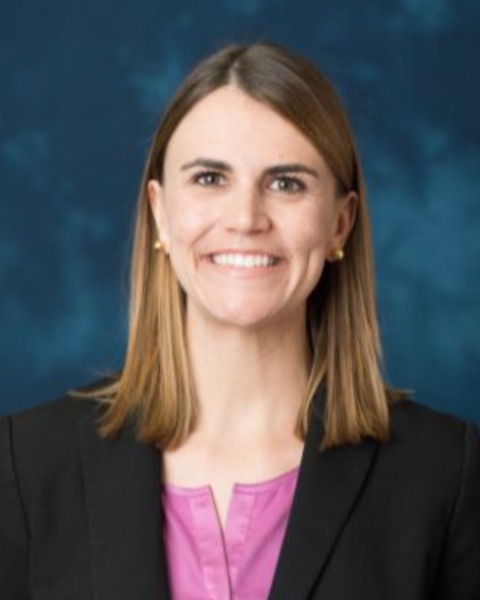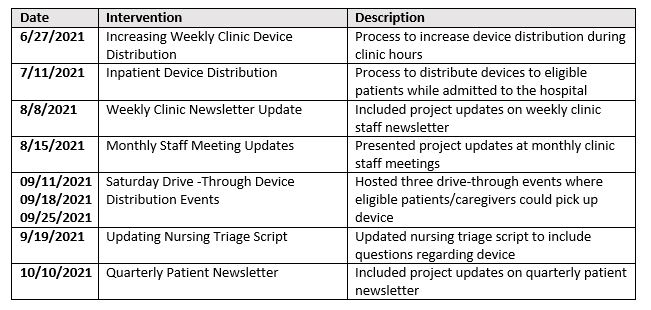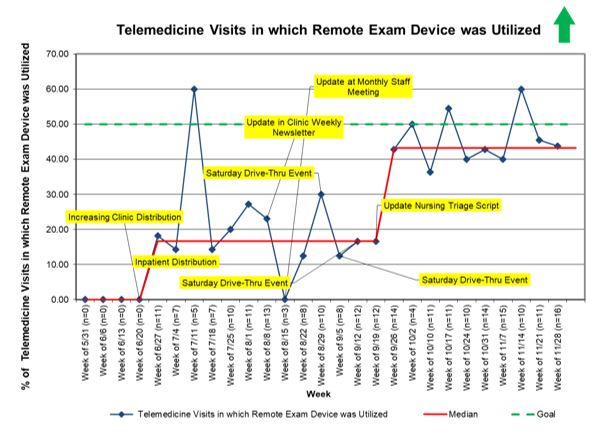Telemedicine/EHR/Medical Informatics
Category: Abstract Submission
Telemedicine/EHR/Medical Informatics I
287 - Increasing Utilization of an In-Home Remote Exam Teledevice in a Complex Care Center
Sunday, April 24, 2022
3:30 PM - 6:00 PM US MT
Poster Number: 287
Publication Number: 287.346
Publication Number: 287.346
Marie Pfarr, Cincinnati Childrens, Cincinnati, OH, United States; Kathleen Pulda, Cincinnati Children's Hospital Medical Center, Cincinnati, OH, United States; Michelle Rummel, Cincinnati Children's Hospital Medical Center, Cincinnati, OH, United States; Calise Curry, Cincinnati Children's Hospital Medical Center, Cincinnati, OH, United States; Scott R. Callahan, Cincinnati Children's Hospital Medical Center, Cincinnati, OH, United States; Karen Jerardi, Cincinnati Children's Hospital Medical Center, Cincinnati, OH, United States; Della smith-Sokol, Cincinnati Children's Hospital Medical Center, Cincinnati, OH, United States; Julie Stalf, Cincinnati Childrens Hospital Medical Center, Cincinnati, OH, United States; Hadley Sauers-Ford, Cincinnati Children's Hospital Medical Center, Cincinnati, OH, United States

Marie Pfarr, MD
Pediatric Hospital Medicine Fellow
Cincinnati Childrens
Cincinnati, Ohio, United States
Presenting Author(s)
Background: Children with medical complexity (CMC), defined as those with chronic, functional limitations and technology dependence, account for high healthcare utilization. The use of telehealth for CMC has potential, as it allows providers to engage with CMC in their home environment and can minimize caregiver burdens. Remote exam devices that enable the performance of a high-fidelity physical exam could expand provider ability to clinically assess CMC patients during a telehealth visit.
Objective: Increase the percentage of telehealth visits in which a remote exam device was utilized in a Complex Care Center from 0% to 50% over 6 months.
Design/Methods: This improvement work targeted a Patient Centered Medical Home Complex Care Center, caring for >500 CMC. Our multidisciplinary quality improvement team determined key drivers to develop Plan-Do-Study-Act cycles. Key drivers included device access, timely identification of patients with devices, ease of connection, strong provider coaching in device use, and knowledgeable and motivated caregivers and providers. Our outcome measure was the percentage of telehealth visits using this remote exam device. We also tracked the number of devices distributed. Data was collected from June-November 2021. Interventions were focused on increasing distribution of devices, establishing a device registry, streamlining the scheduling process, and educating caregivers and providers on successful device use. The number of telehealth visits using a device were displayed on a run chart; established rules for recognizing special cause variation were employed.
Results: The median percent of telehealth visits using the remote exam device increased from 0% to 43% over 6 months (Figure 1). The largest early failure mode was patients not having devices. The majority of our interventions focused on increasing device distribution and educating providers and staff (Table 1). We increased the number of clinic patients with devices from 82 to over 300 patients during the improvement project (Figure 2). Conclusion(s): We successfully increased the utilization of a novel in-home remote exam device for CMC. Future efforts will focus on translating educational materials into other languages, incorporating interpreters into remote exam device visits, and providing internet access to caregivers that do not have home Wi-Fi.
Table 1: Timing and Description of Improvement PDSA Cycles
Figure 1: Run Chart
Objective: Increase the percentage of telehealth visits in which a remote exam device was utilized in a Complex Care Center from 0% to 50% over 6 months.
Design/Methods: This improvement work targeted a Patient Centered Medical Home Complex Care Center, caring for >500 CMC. Our multidisciplinary quality improvement team determined key drivers to develop Plan-Do-Study-Act cycles. Key drivers included device access, timely identification of patients with devices, ease of connection, strong provider coaching in device use, and knowledgeable and motivated caregivers and providers. Our outcome measure was the percentage of telehealth visits using this remote exam device. We also tracked the number of devices distributed. Data was collected from June-November 2021. Interventions were focused on increasing distribution of devices, establishing a device registry, streamlining the scheduling process, and educating caregivers and providers on successful device use. The number of telehealth visits using a device were displayed on a run chart; established rules for recognizing special cause variation were employed.
Results: The median percent of telehealth visits using the remote exam device increased from 0% to 43% over 6 months (Figure 1). The largest early failure mode was patients not having devices. The majority of our interventions focused on increasing device distribution and educating providers and staff (Table 1). We increased the number of clinic patients with devices from 82 to over 300 patients during the improvement project (Figure 2). Conclusion(s): We successfully increased the utilization of a novel in-home remote exam device for CMC. Future efforts will focus on translating educational materials into other languages, incorporating interpreters into remote exam device visits, and providing internet access to caregivers that do not have home Wi-Fi.
Table 1: Timing and Description of Improvement PDSA Cycles

Figure 1: Run Chart

